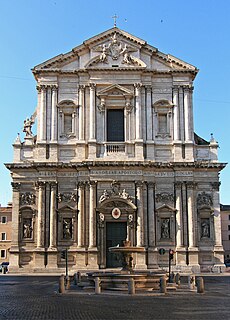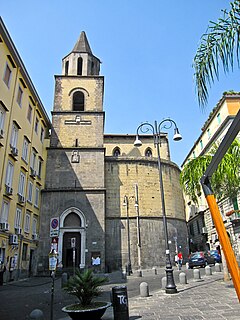| Basilica of San Giovanni Maggiore Basilica di San Giovanni Maggiore (in Italian) | |
|---|---|
 Façade of San Giovanni Maggiore. | |
| Religion | |
| Affiliation | Roman Catholic |
| District | Archdiocese of Naples |
| Ecclesiastical or organizational status | Minor basilica |
| Location | |
| Location | Naples, Campania, Italy |
| Geographic coordinates | 40°50′44″N14°15′20″E / 40.845464°N 14.255520°E Coordinates: 40°50′44″N14°15′20″E / 40.845464°N 14.255520°E |
| Architecture | |
| Type | Church |
The Basilica of San Giovanni Maggiore is a church in Largo San Giovanni Maggiore in central Naples, Italy.
Contents

A 4th-century church at the site was likely erected sometime in the 4th century.[ citation needed ] There are a number of founding legends for the church. One is that emperor Constantine I founded the church in gratitude for the rescue of his daughter Costanza from a shipwreck. It may have been built or introduced into a pre-existing pagan temple dedicated to the cult of Hercules or Hadrian. One of the stones in the architrave is dated to 324. The church underwent numerous reconstructions, including in the 6th century. It was likely made into a Byzantine-style basilica during the era of Belisarius.
After an earthquake in 1635, the last reconstruction in 1656 led to the Baroque building by Dionisio Lazzari seen today. He designed the present cupola, completed in 1685. Further earthquakes in 1732 and 1805 required more reconstructions.

The 1870 earthquake devastated the church and knocked down the roof. For the restoration, Gennaro Aspreno Galante was unable reconstruct the former details. Almost razed in 1872, the local canon Giuseppe Perrella commissioned a neoclassical reconstruction, completed in 1887, from engineer George Tomlinson, with help by Errico Alvino and Federico Travaglini. A hundred years later, the roof again caved down, closing the church again for 42 years, until a restoration in 1978 unveiled the early-Christian apse, below the wooden choir dating from the 17th century. The church was long closed for restoration and architectural studies. [1]



















